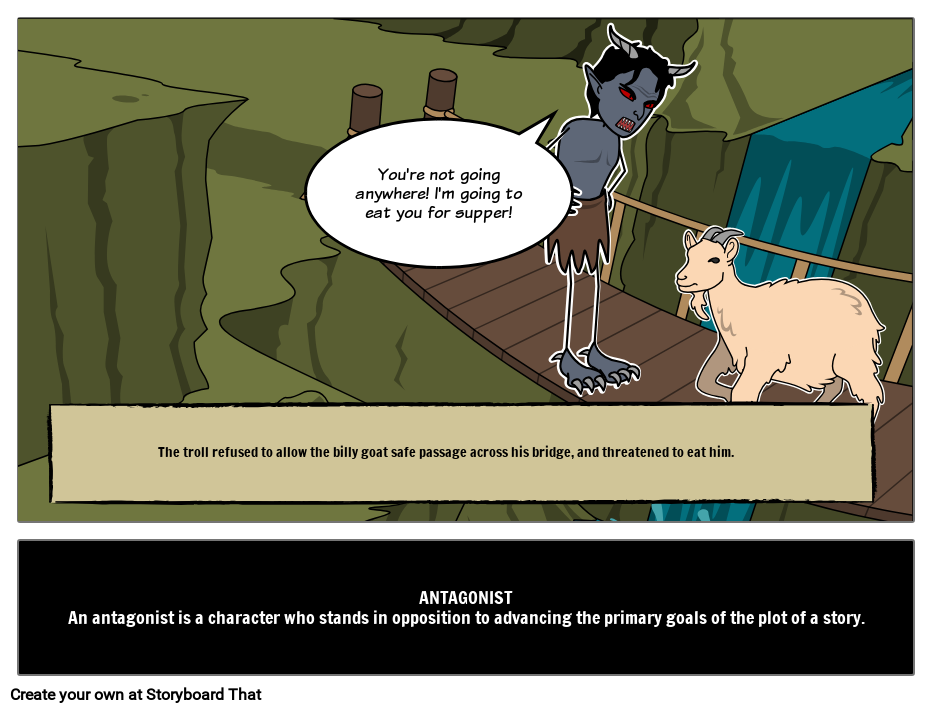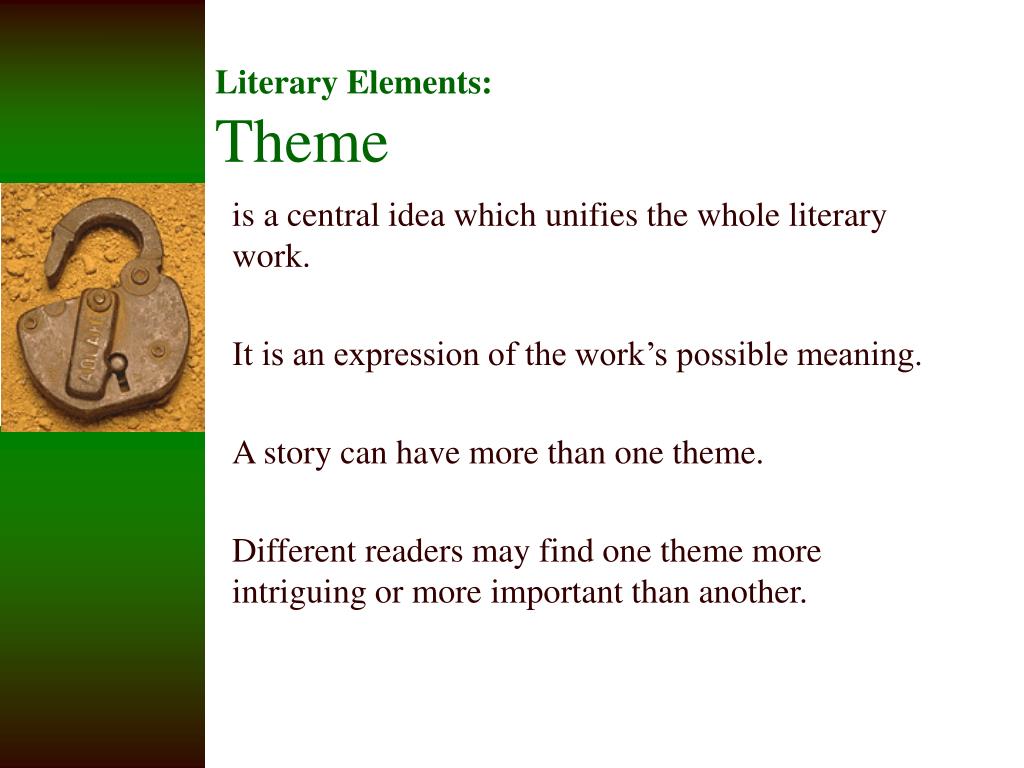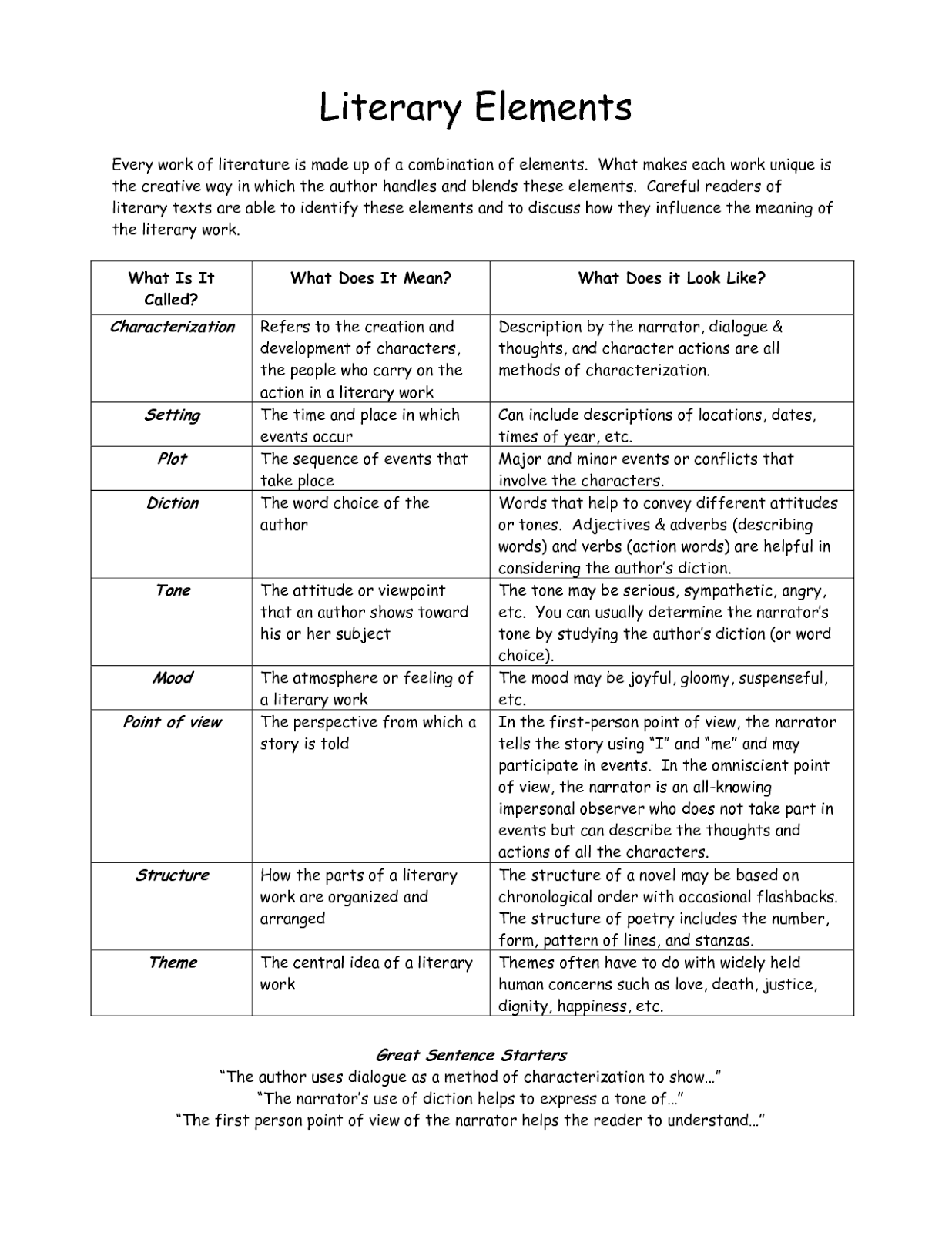
Not every literary work has a theme, and some have more than one

This differs from the subject in that it involves a statement of opinion about that subject. Theme The underlying meaning of a literary work. Setting The time and place in which the action of a narrative occurs Types of Characters Flat Character shows only one trait Round Character Shows many different traits, good and bad Static Character character does not change through the course of the story Dynamic Character character develops and grows during the course of the story Indirect Characterization Indirect Characterization may be accomplished by describing the character’s physical appearance and situation, revealing a characters thoughts, The character’s words or actions, showing the reaction of other characters. Indirect Characterization More common method for most characters, especially major characters We must infer personality traits from the story He was a grumpy and unfriendly old man, known for his hatred of young children and puppies. This may be done by: Direct Characterization The author directly states aspects of the character’s personality i.e. Reversal A sudden change in a character’s situation from good to bad or vice versa Ĭharacterization The technique used by a writer to create and reveal the personalities of the characters in a written work. Mystery The creation of suspense by withholding information or by presenting unusual circumstances Suspense The uncertainty or anxiety that a reader feels about what will happen in a story Foreshadowing Dilemma Mystery Reversal įoreshadowing Clues (real or false) that hint at a story’s outcome ĭilemma A character that we care about is in peril or must choose between two dangerous courses of action Society Ĭomplications Small problems in addition to the conflict that add interest to the story

Ĭonflict The Primary struggle between the main character or characters and an adverse character, group or force Internal Conflict A struggle between a character and him/herself External Conflict A struggle between a character and an outside force.
LITERARY ELEMENTS SERIAL
In the previous example, the policeman who is trying to catch the serial killer (who is the main character, and therefore the protagonist) is the antagonist. Antagonist primary adversary of the protagonist Sometimes the villain Again, not always. Main characters Protagonist MAIN CHARACTER of the story Often, hero or character the audience is supposed to feel most sympathetic for Not always…for example, the main character could be a serial killer. Resolution - The conflict is resolved (positively or negatively) and the story is brought to a close - Also know as “Denouement” Ĭlimax, Falling Action and Resolution Climax The most exciting point in the story, when the conflict is decided Falling Action The action and dialogue following the climax that lead the reader into the story’s end. Rising Action The central part of a story during which various problems arise after a conflict is introduced.
LITERARY ELEMENTS SERIES
Jane Austin uses the literary term of conflict to basically drive the her whole novel, the conflicts of the characters are the basis of the book from Dary&Elizabeth to Mr.&Mrs.Bennet, the whole book is one big conflict.Plot A series of related events that present and resolve a conflict Įxposition and Rising Action Exposition The part of the story, usually near the beginning, in which the characters are introduced, the background is explained, and the setting is described. Jane Austin uses irony quite a bit in Pride and Prejudice to open up the eyes of the readers to the misconstrued ideals of society on things like marrige. Jane Austin uses characterazation alot in her novel, she uses this literary term to steadily build her characters all the while crafting their individual personas. The outstanding literary elements showcased in the novel Pride and Prejudice were characterazation, irony, and conflict. Lastly Reputation/Class was a theme very evidently dislpayed throughout the novel by Darcy's constent concern for his and his sisters reputation and the large diffrence in social class between himself and Elizabeth. Love/Marrige is also a huge theme in Pride and Prejudice because that was a main goal in lives of women in the 19th century, to marry for sustainment not for love wich is a theme argued both ways within Pride and Prejudice.

Pride is an obviouse theme because Pride and Prejudice is plot and character based, which leads perfectly to the High Horse pride of Mr.Darcy and the independent pride of Elizabeth pride inevitably keeps them from love. The three major themes of Pride and Prejudice are Love/Marrige, Pride, and Reputation/Class. romance and of course the ever reacurring sarcasm. The tone of "Pride and Prejudice" by Jane Austen is of course the true essence of Pride and Prejudice.


 0 kommentar(er)
0 kommentar(er)
